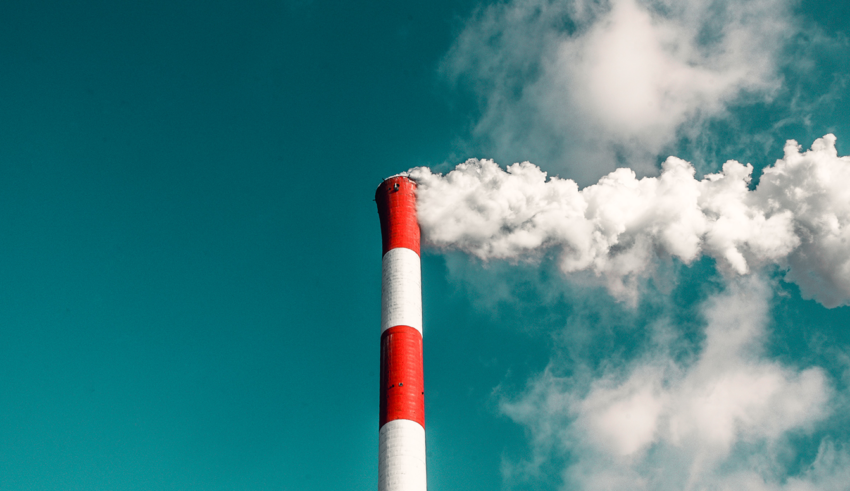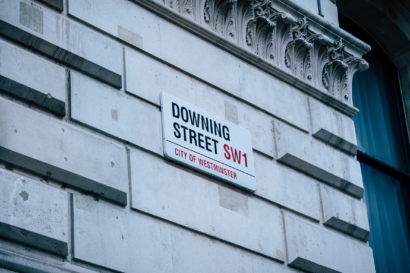AG INSIGHT | 21/07/2022
Yes, the UK emissions trading scheme needs reforming, but that’s not all it needs

Laith Whitwham, Senior Policy Officer at the Aldersgate Group, reflects on what is required from the UK Emissions Trading Scheme (ETS) to deliver the emissions reductions we need.
Before the leadership contest and record high temperatures dominated headlines, the Government quietly concluded its consultation on proposed reforms to the UK Emissions Trading Scheme (ETS). Many of the suggested changes provide a welcome step towards correcting a scheme that has underperformed for several years, but the UK’s primary tool for pricing carbon is in need of much more than tweaks and amendments. A suite of supportive policies, greater ambition, and the delivery of past commitments must be implemented. Doing so will not only provide much needed emissions reductions, but a chance for UK industry to seize the opportunities found in the growing green markets of a low carbon economy.
A system in need of reform
The UK ETS is the way that Government puts a price on carbon emissions. Businesses covered by the Scheme buy and sell emissions ‘allowances’ that they must hand over at the end of the year to cover their total CO2 emissions. The theory goes: the more you emit, the more allowances you’ll need to buy; but if you decarbonise, you can sell your surplus allowances for a profit. An incentive to decarbonise.
By capping the number of allowances available, the policy is a great way of limiting emissions while driving decarbonisation where it is cheapest. At least in theory. In practice, a loose cap on allowances has allowed emissions to remain high for years, while free allowances – which are supposed to be given by Government to reward efficiency or prevent companies offshoring – have been handed out too generously, giving some participants a free ride. Several airlines for example, received more free allowances than their overall emissions.
Narrow sectoral coverage – covering only industry, aviation and power – has also left large parts of the economy facing little to no carbon price. Meanwhile the small size of the UK ETS means it has relatively few participants, which damages liquidity and reduces the pool of businesses from which measures of best practice are taken (which inform the way Government issues free allowances).
Welcome proposals from Government
With this in mind, it is incredibly welcome to see Government propose a reduced cap on emissions, aligned with the UK’s pathway to net zero as outlined by the Net Zero Strategy.
Government also plans to phase out free allowances for aviation (which is not at risk of carbon leakage), in a move that is well overdue and should be expedited to ensure the sector faces a fair price on carbon.
Elsewhere, Government proposes expanding the UK ETS to emissions from waste incineration, and domestic shipping, in a move that will help to ensure a greater portion of the economy is rewarded for decarbonising.
Recognising that the reduction of the cap on emissions could have a large financial impact, Government is also right to propose temporary support for some UK ETS participants (perhaps from the sale of surplus allowances), especially those without an immediate option to decarbonise.
The need for more ambition
This said, some of these reforms lack ambition. The proposal for maritime emissions only includes intra-UK journeys, a very small part of the sector. To apply a meaningful incentive to the sector Government should include 50% of emissions from UK-International journeys (matching the ambition of the recent EU ETS proposals).
It is also disappointing to see no discussion in Government on removing the ‘zero rating’ on bioenergy emissions (which entirely discounts the CO2 emissions from burning biomass feedstocks, such as wood pellets), despite the evidence that burning biomass can result in carbon debts beyond 2050 and negative impacts on air quality, biodiversity, and ecosystem services (such as water filtration). By excluding bioenergy emissions, Government also reduces the revenue raising potential of the UK ETS by more than £500m.
Silence from Government
The consultation also misses the opportunity to begin a conversation on extending the UK ETS to other big emitting sectors, such as transport and buildings.
We need to use all tools at our disposal to decarbonise by 2050. Together these sectors are responsible for over 40% of the UK’s emissions, however including them in the UK ETS could be particularly tricky as they may be a more direct impact on consumers and households. Government should therefore be doing more, now, to understand how this might work.
But perhaps most conspicuous in its absence, is the mention of a Carbon Border Adjustment Mechanism (CBAM), which doesn’t appear once among the 196 questions. A CBAM places a price on the carbon of goods imported into the UK, and with the EU pushing ahead with its own in 2026, high carbon products could be redirected to the UK, undermining domestic industry. A CBAM in the UK would mitigate this risk, levelling the playing field for producers while ensuring all goods sold in the UK meet a higher standard on emissions.
Beyond carbon pricing
All this said, we must not put all our eggs in the carbon pricing basket.
Government need to urgently implement standards that limit the embodied and lifecycle emissions of products, and introduce green public procurement mandates to grow the market for low carbon products (for example, by requiring the use of green steel in projects paid for with public money).
To scale up new low carbon technologies, greater demonstration-led innovation funding is needed, while for those that exist but have not reached commercial scale (such as green hydrogen and CCS), Government business models must be finalised to accelerate deployment. Government also need to implement measures to reduce industrial electricity prices with pace to unlock the benefits of electrification.
In the waste sector, expansion of the UK ETS to waste incineration is needed to reduce existing incentives to burn residual waste, however more is needed to prevent waste reaching this point (or landfill) in the first place.
Measures Government first proposed in 2018 need to be implemented urgently, such as a Deposit Return Scheme, Extended Producer Responsibility, and product labelling. Government can also plug policy gaps by investing in circular infrastructure and introducing tax and fiscal incentives for repair and resource efficient products.
Complimenting the carbon price
Not only can these measures help to deliver urgently needed emissions reductions, they can support businesses in responding to the carbon price itself.
If businesses do not have the ability to decarbonise the carbon price simply becomes an added cost rather than an incentive. This poses the risk of companies choosing to move their emitting activities elsewhere and importing goods into the UK – a loss for the climate and the UK’s workers and economy.
As Laura Cohen, former CEO of the British Ceramic Confederation, put it in a recent article for the Aldersgate Group, we won’t save the planet if the UK decarbonises by deindustrialising.
By implementing policies that improve industry’s ability to supply low carbon products and others that establish demand for these goods, Government can ensure that the UK uses its position as an innovator to drive emissions reduction, while also harnessing the benefits offered by net zero and the green markets growing all around us.


